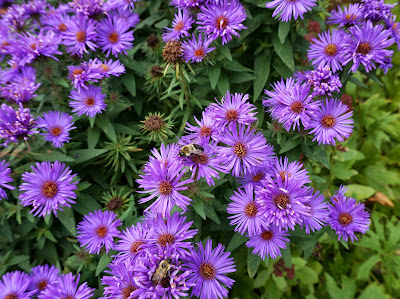Trees, now leafless, revealed their shape and seed, including more southern species that I rarely see in New Hampshire. See if you can identify these next four species of trees before I give away their identifications at the bottom of the post. Here is a little bit of information about each...
A tree with gray furrowed bark;
a nut favored by humans and wildlife,
is found inside a round husk that stains ones hand.
Note the stout twigs.
This is a scrappy tree, sometimes called an ash-leaved maple.
But what other common name does it go by?
This tree grows in my parents front yard; a tree that I grew up playing under and it still stands tall next to the honey locust tree just outside the front door. The leaves linger late into the fall and produce large leaves it does. I placed a large garlic clove on one such leaf to show proportion.This next tree unfortunately is succumbing to a fungus canker across its range. But many lovely specimens still grow in my parents yard. Squirrels love the nuts. The sticky outer husks leave a mess in the yard and cause the lawn mower to spit out pieces in all directions. It is in the same family as the first species showcased.
Okay, so here is the tree list in order of their photos: black walnut, boxelder, catalpa, and butternut.

































